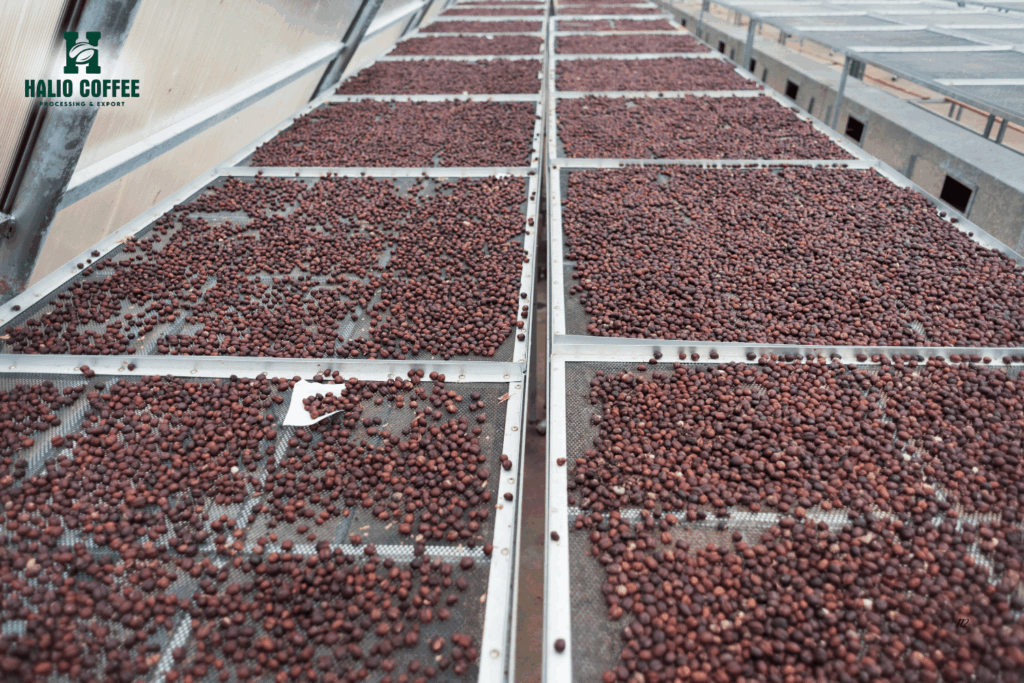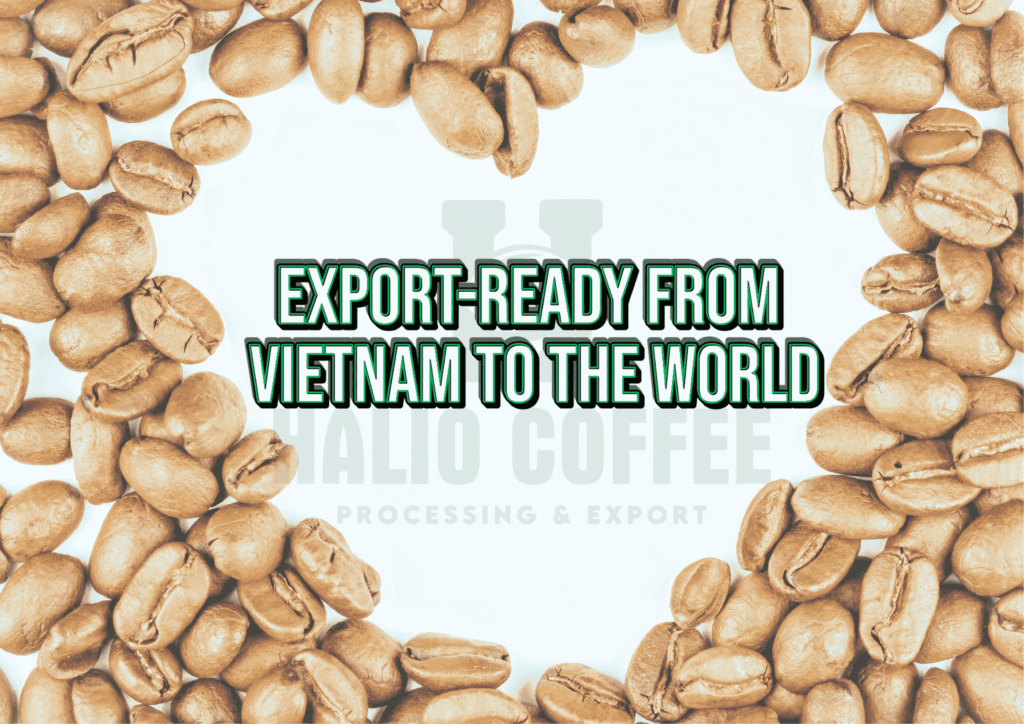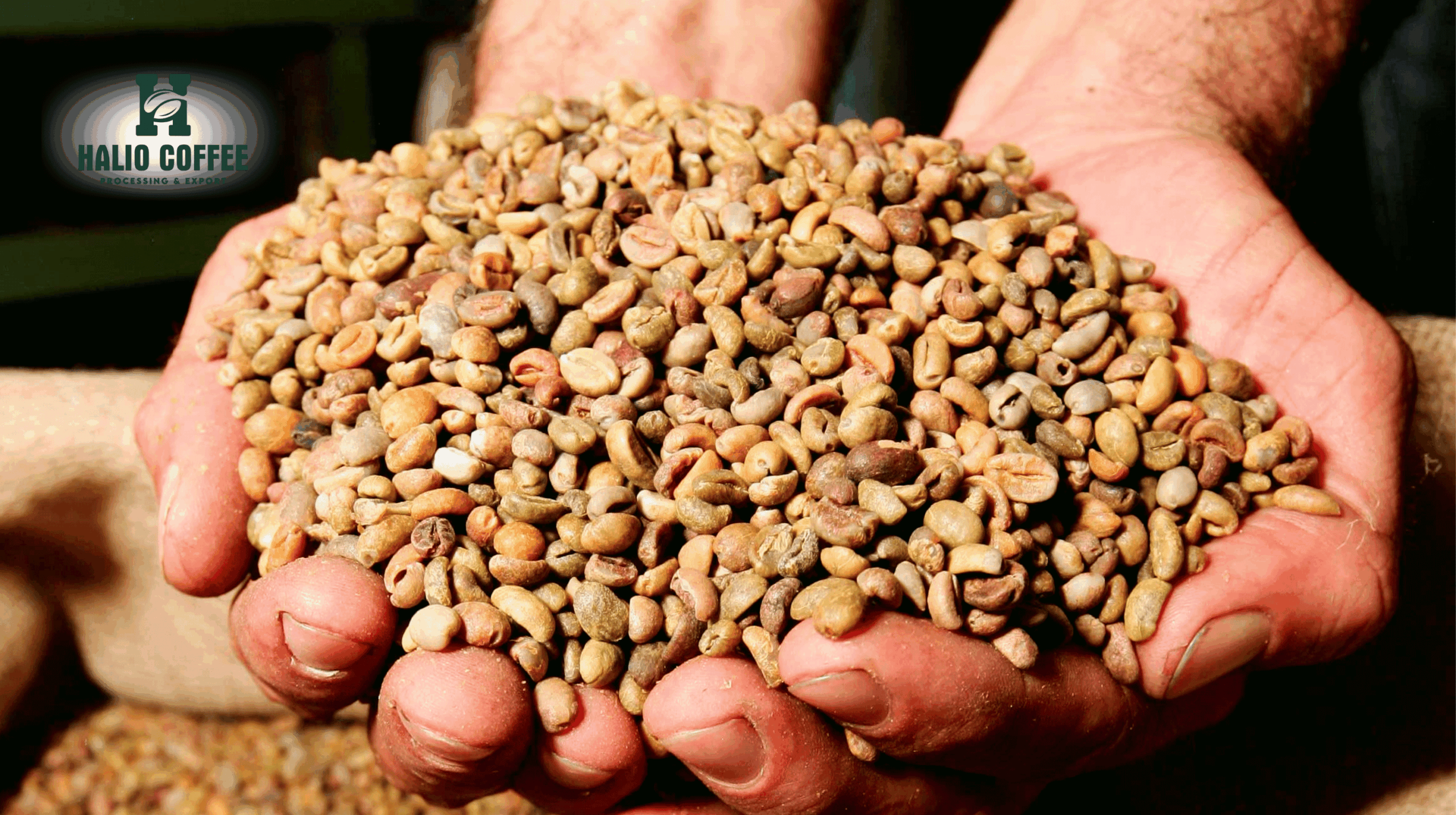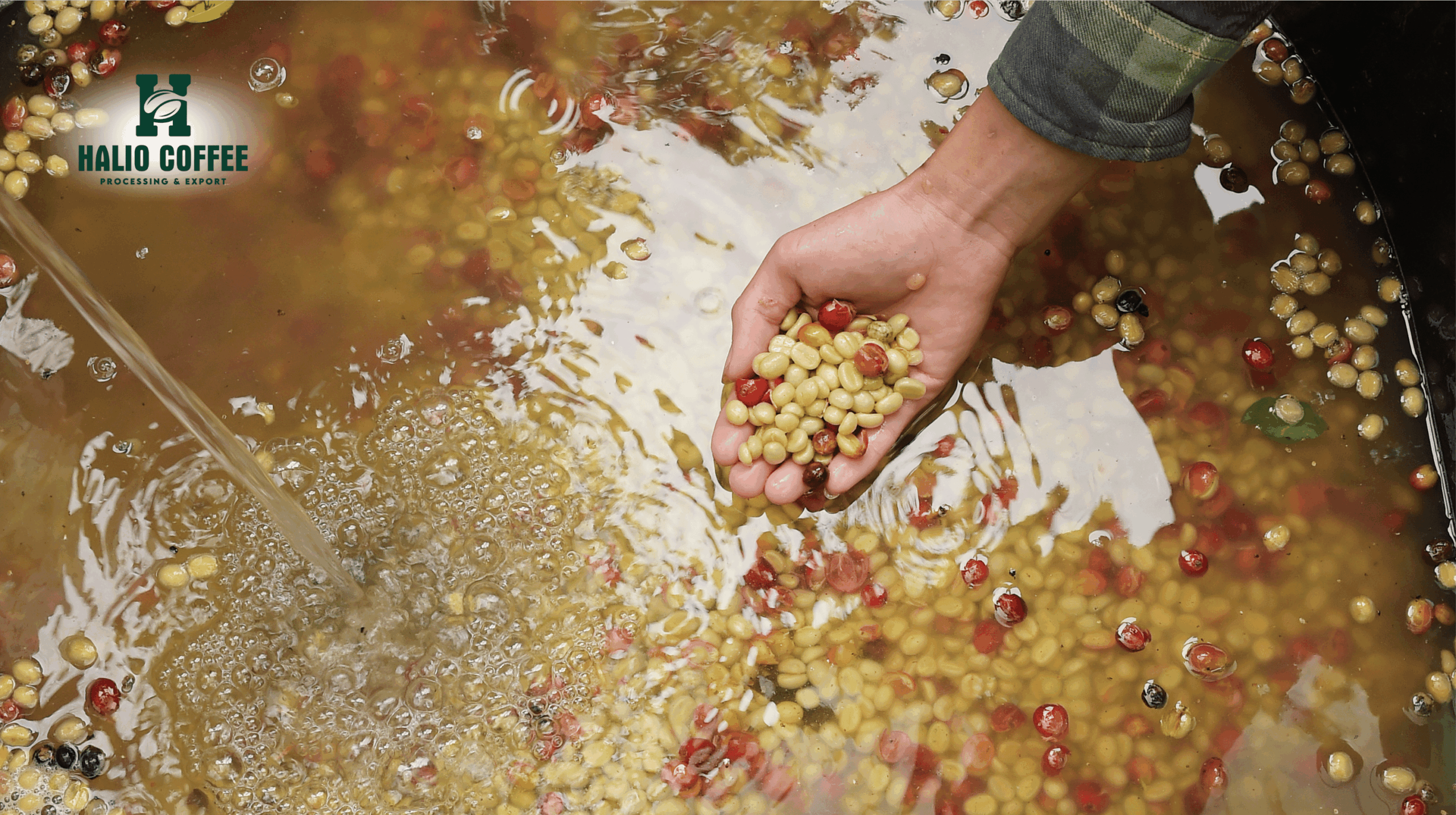The Definitive Guide to Vetting a True Fresh Coffee Distributor in Vietnam
In the global quest for exceptional coffee, the term “freshness” is paramount. For international roasters and importers, freshness is not merely about the time elapsed since roasting; it begins thousands of miles away, at the moment the coffee cherry is picked. Sourcing directly from Vietnam, a titan of the coffee world, offers the promise of unparalleled access to this origin-level freshness. Yet, the path is complex. The challenge lies in distinguishing a simple freight forwarder from a genuine partner—a true fresh coffee distributor who is deeply integrated into the supply chain and committed to preserving quality from farm to port.
Many businesses begin their journey by searching for a basic Vietnamese green coffee beans supplier, but quickly realize that a more sophisticated partner is needed. A misstep in supplier selection can lead to inconsistent quality, aged inventory, poor processing, and a complete disconnect from the coffee’s origin. This guide serves as an advanced, professional framework for vetting and securing a high-caliber fresh coffee distributor in Vietnam. Drawing on decades of supply chain experience, we will dissect a four-stage due diligence process designed to identify partners who are not just sellers, but custodians of quality and freshness, ensuring the coffee you source is a true representation of its vibrant origin.
Understanding the Supplier Spectrum: From Trader to True Partner

The first step in your vetting process is to understand the ecosystem. The title “exporter” can describe vastly different business models in Vietnam. Identifying the type of entity you are dealing with is critical to managing risk and aligning with your quality goals.
The Pure Exporter / Trader
These are primarily logistics and trading specialists. They have mastered the complexities of export documentation and shipping but typically have a hands-off approach to the coffee itself, buying from various sources to consolidate and fill containers.
- Pros: Highly proficient in international trade logistics and can often handle very large volumes.
- Cons: Traceability and freshness are major concerns. Coffee is often blended from multiple, anonymous sources and may include different crop years, making quality consistency nearly impossible to guarantee.
The Producer-Exporter (The Ideal Model)
This model represents a supplier who is intrinsically involved in the production and processing of the coffee they export. Often evolving from a family business with deep roots in the coffee lands, this entity offers an end-to-end quality proposition. Companies that self-identify as involved in “Producing, Supplying and Exporting,” like Halio Coffee, exemplify this integrated approach.
- Pros:
- Unmatched Freshness & Control: By managing the process from harvest (ensuring practices like “100% Riped” cherry selection) to processing and export, they have maximum control over the freshness and quality of the final product.
- Excellent Traceability: You can trace the coffee back to a specific region, farm, or processing batch, which is invaluable for marketing and quality assurance.
- Deep Product Knowledge: These suppliers can speak with authority on varietals (like Catimor, Caturra, Typica), growing altitudes, and processing methods (Washed, Honey, Natural), demonstrating a true mastery of their craft.
- Cons:
- Capacity Verification Needed: While their quality is often higher, you must verify their production capacity to ensure they can meet your volume requirements consistently.
The Farmer Cooperative
A cooperative is an organization owned and operated by a group of farmers. They pool their resources to achieve better processing and direct market access, often with a strong ethical component.
- Pros: Offers a direct connection to the farming communities, providing a powerful story of origin and alignment with values like supporting “Local Communities.”
- Cons: The level of business sophistication and export expertise can vary widely. They may require a more hands-on partnership from the buyer.
The Vetting Framework: Your Blueprint for Selecting a Fresh Coffee Distributor

A rigorous vetting process is a multi-stage campaign. Following this phased approach will allow you to systematically de-risk your sourcing decisions and identify a true partner.
Stage 1: Digital Reconnaissance
This is the discovery phase, where you build a longlist of potential suppliers based on their digital footprint.
- Professional Website Analysis: A supplier’s website is their global storefront. It should be professional, written in clear English, and transparent. Look for a clear “About Us” section detailing their history and mission. A story of evolving from a family business, for instance, can indicate deep-seated experience.
- Product Portfolio Transparency: A credible supplier will proudly and clearly display their products. Look for high-quality images of their actual green and roasted beans, not just generic stock photos. An excellent sign is a detailed breakdown of their offerings, distinguishing between Arabica and Robusta, and providing specifics on growing regions (e.g., Lam Dong, Son La for Arabica; Daklak, Gia Lai for Robusta), varietals, and processing methods.
- Contact Information & Credibility Check:
- Verifiable Address: A physical address is non-negotiable. An address in a key coffee-growing province like Dak Lak provides significant geographic credibility.
- Initial Red Flags: While a free email address (like Gmail) can be a red flag for a large, anonymous corporation, it can be common for key decision-makers (like the CEO) in family-run or recently rebranded producer-exporter businesses. The key is to weigh this against other credibility factors like a professional website, a verifiable address, and transparent product information.
Stage 2: In-Depth Due Diligence & Documentation Review
Once you have a shortlist, it’s time to verify their legitimacy through official documentation. A transparent partner will provide these willingly.
- The Essential Document Checklist:
- Business Registration Certificate (BRC): Verifies their legal name (e.g., Halio Coffee Co., Ltd) and status.
- Export License: Confirms they are legally permitted to export coffee from Vietnam.
- Food Safety & Quality Certifications: Certifications like HACCP or ISO are strong indicators of a systematic approach to quality. If they claim to offer “Vietnam Organic Coffee,” they must be able to produce a valid, verifiable certificate.
Stage 3: The Freshness Test – Sampling & Communication
This is where the theoretical meets the tangible. This phase tests the actual quality of their coffee and the quality of their communication.
- Technical Dialogue: Engage with their team. Can they answer detailed questions about their processing methods? A truly knowledgeable fresh coffee distributor can discuss the nuances between Washed, Honey, and Natural processing and how each impacts the final cup profile.
- The Sampling Protocol:
- Request samples of specific products you saw on their website (e.g., “Robusta Honey Processed Coffee, SCR16”).
- Always offer to pay for samples and shipping to signal you are a serious buyer.
- Upon arrival, assess the physical green beans for defects, uniformity, and moisture content. The quality should reflect their claims, such as “Selection of the best coffee beans.”
- The Ultimate Test: Cupping: Sample roast and cup the coffee according to SCA protocols. This is the final arbiter of quality and freshness. A bold, earthy, full-bodied Robusta or a bright, complex Arabica should present itself clearly in the cup.
Stage 4: The On-Site Audit (The Ultimate Verification)
For any significant, long-term partnership, an on-site visit is the gold standard of due diligence.
- Facility Inspection: Audit their processing mill and warehouse. Look for cleanliness, organization, and proper storage conditions (e.g., coffee stored on pallets in a climate-controlled environment).
- Process Verification: Ask them to demonstrate their traceability system and walk you through their quality control stations.
- Assess ESG Commitment: A modern, forward-thinking partner often has a strong commitment to sustainability. Look for evidence of their efforts in “Conservation” and their positive engagement with “Local Communities.”
By integrating this comprehensive framework, you can elevate your sourcing strategy. The goal is to find more than just an exporter; it’s to find a partner who shares your commitment to quality. A premier fresh coffee distributor acts as your extension at origin, a guardian of the freshness and integrity of the coffee from the moment it leaves the tree. They provide transparency, expertise, and, most importantly, a consistently high-quality product that forms the backbone of your business.
Now that you have the framework to identify and vet a capable partner, the next step is to delve deeper into the raw material itself. To make informed purchasing decisions, a thorough understanding of the product is essential. Our next guide provides a detailed analysis of Vietnam green coffee beans, covering grading standards, regional profiles, and key quality indicators.
- Mastering the Request for Quotation (RFQ) for Green Coffee
- Coffee Prices Today, Nov 6: Both Markets Rise; Strong Arabica Rally Pulls Robusta Higher
- Arabica Coffee Supplier for Cafés & Roasteries: A Strategic Partnership for Quality and Growth
- Fresh Robusta Coffee Beans Supplier: Elevating Vietnam’s Specialty Robusta to Global Markets
- The Importer’s Playbook: A Step-by-Step Guide on How to Import Coffee from Vietnam







